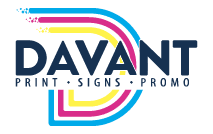What is the digital printing process?
The digital printing process prints directly from the digital file sent to an inkjet, laser, or other types of modern digital printer. Unlike offset printing and other commercial methods digital printing eliminates the need for a printing plate, which can save money and time. In digital printing, an image is sent directly to the printer using digital files such as PDFs and those from graphics software such as Illustrator and InDesign.
Digital printing can be used for just about anything that is done using offset printing. From brochures, business cards, postcards, calendars, photos and more, see if digital printing is a cost effective solution for your printing needs!
Digital Printing:
- For copy jobs or low-volume color printing with high-quality results, digital machines are a great option for a tight budget.
- With digital printing, last minute corrections and edits are easy to apply.
- There is great flexibility with the quantities, from short runs to large-scale projects.
- Fast digital printers can easily accommodate last minute requests, often with the ability to offer same day or next day turnaround.
When to use digital printing.
There are nine main types of printing processes:
Digital printing – prints directly from the digital file sent to an inkjet, laser, or other types of digital printer using options such as toner or liquid ink.
Offset printing – uses plates to transfer an image onto a rubber “blanket”, and then rolling that image onto a sheet of paper. How does it work?
Engraving – used when printing fine stationary, the engraving process imposes ink onto paper under intense pressure, creating raised type and graphics on each piece of paper.
Thermography – melted powder creates a raised ink effect used in types of stationary.
Reprographics – is the reproduction and duplication of visual materials such as documents, drawings, images, and designs through any process that makes use of light, optics or any photographic means.
Letterpress – the original Guttenberg process.
Screen – the ink is pushed through a mesh or stencil to print a particular design on the desired material, like your personalized t-shirt.
Flexography – uses flexible photopolymer printing plates wrapped around rotating cylinders on a web press. Usually used on packaging, such as can labels, or gift-wrap.
Gravure – used for huge runs of magazines and direct-mail catalogs, an image is acid-etched on the surface of a metal cylinder one cylinder for each color in a pattern of cells.
Each printing process has their own particular benefits depending on your project’s requirements. Still, offset and digital printings remain the two most widespread printing processes available. While offset printing is a fantastic way to produce great-looking print projects, many businesses or individuals do not need large runs of 500 or more, and the best solution is digital printing.

